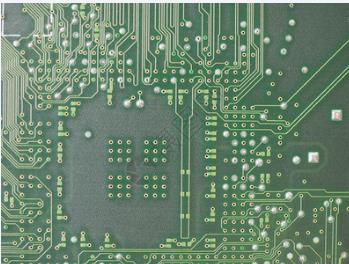The following are the reasons why the PCB board is easy to oxidize on the surface in hot weather and can not be tinned. I hope it will be helpful to everyone.
There is a kind of quality complaint: the high incidence of tin on the surface of the pad is summer, and it disappears without a trace or lower in winter, just like a seasonal disease. Here, we will systematically answer your questions and how to prevent some basic problem!
1: Why does tin not take place in summer, high temperature promotes oxidation?
1) Because of the hot weather, if the PCB is transferred from the outdoors of more than 30 degrees to the indoor of 22 degrees, it is very easy to cause the phenomenon of "sweating" on the surface of the PCB, which may cause the PCB to have moisture and cause the surface to oxidize.
2) After the PCB is unpacked, the internal environment of the SMT factory is not good or the temperature is high. If the air is acid or alkali, the surface will be easily oxidized under the catalysis of high indoor temperature, which will lead to the failure of tin
3) During the SMT soldering process, pay special attention not to touch the PCB with your hands, and you must wear white gloves to prevent oxidation of the PCB surface
4) Pay special attention to that, after soldering one side, solder the other side as soon as possible, otherwise it is very easy to contaminate the other side when soldering the first side, causing one side to be tinned and the other side is not tinned.
5) After brushing the solder paste, you must go through the furnace immediately, otherwise the oxidized pad will not be tinned due to the chemical composition of the solder paste
2: Lead spray tin, lead-free spray tin, gold immersion process is easy to tin, not easy to oxidize?
Lead-sprayed tin is the best method for tinning, and the complaint rate is relatively low. Immersion gold is relatively okay. Immersion gold is relatively easy to oxidize on the surface. The least prone to tinning is lead-free tinning, because there is no The solder joints of lead itself are high. If it is not because your products have strict requirements, it is recommended to use lead. The boards of military enterprises use lead spray tin!

3: How to avoid losses and reduce disputes?
This is very important, please read carefully: the most difficult to distinguish the responsibility is that the solder pads are not tinned, which involves the circuit board factory, the customer, and the SMT soldering factory, so in order to reduce disputes,
1) Before soldering, the SMT factory must brush a few pieces of solder paste through the furnace. Look at the condition of the tin. If the situation is abnormal, stop soldering, and find out the reason.
2) Double-sided soldering, you need to complete the tin test on both sides of the tin effect
3) For the large quantity of lead-free spray tin panels, Jiali Chuang will generally make prototypes before leaving the factory, and give the customers the immersion tin test together!
4: Quality disputes and resolution
1) PCB Under the condition of fully guaranteeing to 3 o'clock, if there is a problem of not tinning in our system as soon as possible, we will let you send some unwelded boards to us for welding test tests (Jia Li Chuanghui Kaigang Net, give it to Jiali Chuang SMT factory department for furnace test), if the furnace test is no problem, it appears that there are some problems with your SMT soldering. If the solder cannot be soldered, we will perform oxidation treatment and hand it to Jiali Chuanglai deal with! So try to do the first side welding!